Chris Harry’s 2025-26 MBK Preseason Primer
So here we are again, nudging our way toward the start of the college basketball season, the preparation for which actually began way back in April when new guys arrived and former players bolted.
But this season – this Florida basketball team – has a different feel.
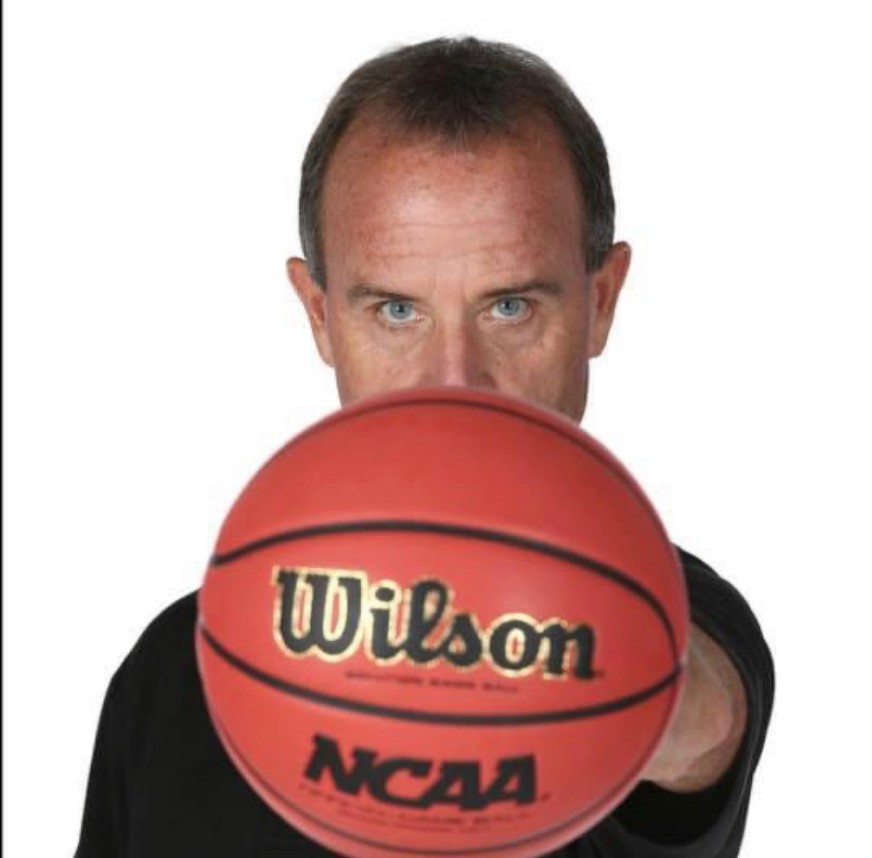
The Gators’ energy, especially the ferocious across-the-board competitiveness, of a summer ago was something to behold. The return of elite scorer and highly motivated Walter Clayton Jr., respected and improved Will Richard and the added defensive dog mentality of Alijah Martin was felt in the Hugh Hathcock Basketball Complex on a daily basis. We know how their leadership, experience and will to win manifested itself. We’ve seen and touched the trophies. Now, all three of those guys are in the NBA.
But UF’s reigning NCAA-championship program has a bunch of players back (some outstanding ones), starting with what is easily the best and deepest front court in the country. Coach Todd Golden and his assistants were challenged with filling (not replacing; that would be impossible) the void left by the Clayton/Martin/Richard three-headed monster. The early returns have been, well, better than promising.
Now here we are. The Gators officially tip off fall practice Monday.
The below role projections are based on observations from summer workouts, individual instruction sessions and pickup games. They are, of course, subject to change (Yes, I’ve had a few misses in this role-prediction space over the years), given the length of the season, bumps and bruises and developments along the way. The ’25-26 Gators are in the identity-forming process, but the coaches have a very good idea what they have in this group. They likely don’t have a team that will rank in the top 10 nationally in both offense and defense, like the Gators did at the end of last season. The goal is to be in the top 20 in both, which is difficult enough, but statistically gives teams the best chance to win a national title. UF will be able to score in bunches, though probably not as proficiently as last year (Clayton may have been the best offensive player in the country). It’s fair to assume the Gators (with the loss of Martin) will take a step back defensively.
That said, Florida is expected to be the preseason pick to win the Southeastern Conference. Plenty of prognosticators will put them back in the Final Four. In other words, buckle up, folks.
The ’25-26 season opens Nov. 3 against Arizona in Las Vegas.
Time to prime.
BEST PLAYER: Thomas Haugh
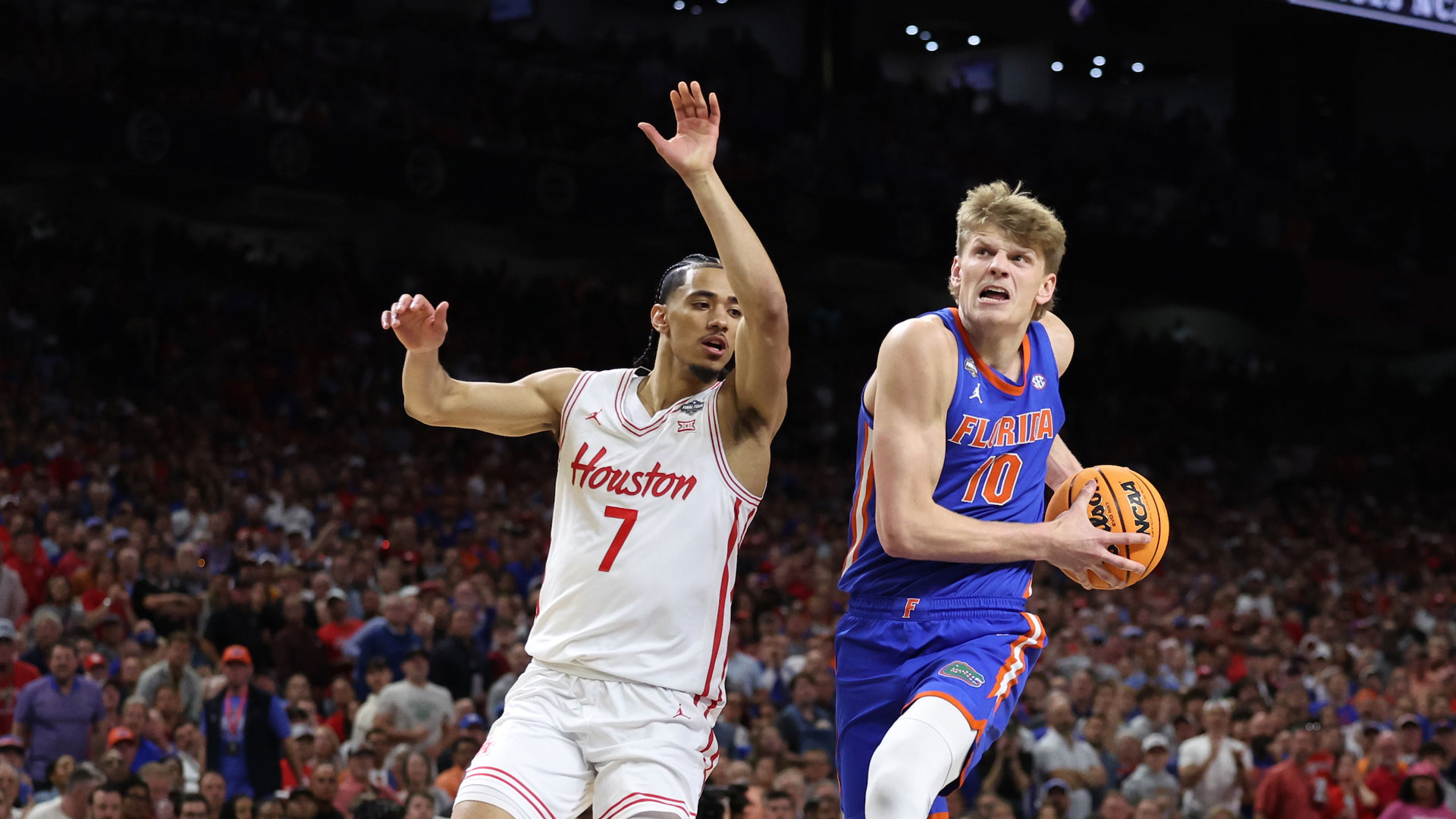
This designation, on a team with some outstanding individual players, was not made lightly. Based on talent and past production, four or five guys could fit the ball. The pick was, however, made with the understanding the 6-foot-9, 220-pound Haugh, now a junior, is transitioning from full-time “4” to starting “3,” the spot manned the last three seasons mostly by Richard and his terrific 3-point jumper. Moving to the wing will be different for Haugh, but it should be a smooth transition, given how his game has developed over his two seasons. Despite coming off the bench in all but five games in ’24-25, Haugh was fifth on the team in minutes (24.3 per), fifth in scoring (9.8) and third in rebounding (6.1). In replacing Alex Condon in the starting lineup for basically six games, Haugh averaged 31.5 minutes, 13.7 points, shot 60 percent from the floor, grabbed 6.0 rebounds and dished 3.5 assists during that span. The night Condon rolled his ankle 30 seconds into a road win at Mississippi State, Haugh nearly posted a triple double (16/9/8 in 37 minutes). As for the shooting role at the “3,” Haugh’s dedication in the gym got him from a 25.5% shooter from 3 as a freshman to 34.0 as a sophomore, with that latter number just two percentage points lower than Richard’s last season. Haugh dropped at least three 3s in four different games last season, including a career-high four in the comeback against Texas Tech in the Elite Eight. How moving Haugh away from the basket affects his rebounding, especially on the offensive end, remains to be seen — he’ll still get minutes at the “4” spot — but Haugh’s tireless, high-end effort suggests he’ll still be a huge factor crashing the glass, whether he grabs balls or keeps them alive for teammates. Haugh’s name has appeared on various lists of potential national “breakout players” this season. That’s not only comical, it’s something of a dis. “Tommy” was one of the most impactful players in the country last season, with some of his biggest moments under the brightest pressure-packed lights. Best of all, Haugh’s finish to the season carried into the offseason and has not stopped.
BIG EXPECTATIONS: Alex Condon
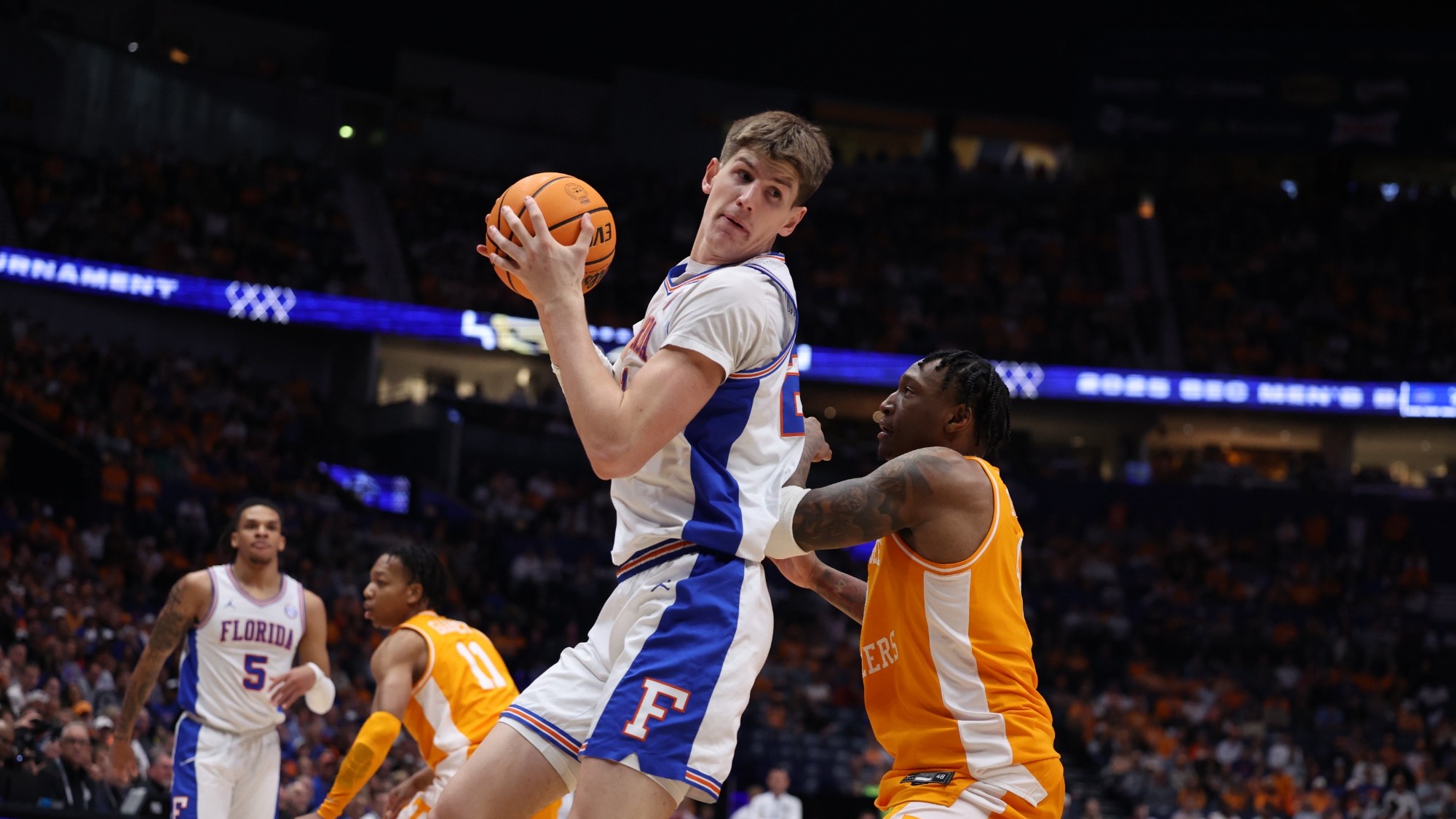
Condon, after a ’25 third-team All-SEC campaign when he averaged 10.6 points and was sixth in the league at 7.5 rebounds over 25 minutes per, went through the NBA evaluation process and ultimately made the right decision to return for his junior season. The 6-11, 236-pound Australian has an elite motor, high IQ, great hands, outstanding shot-blocking anticipation and is a gazelle in transition. “Condo” had moments as a sophomore when he looked like one of the best bigs in the country. Three times, he was named SEC Player of the Week, including the final week of the regular season when he posted double doubles with 27 points at Alabama and 15 rebounds against Ole Miss, both career highs. In the NCAA Tournament, though, he had a four-game run – facing some physical, burly, NBA types – when he totaled just 19 points and was prone to turnovers before coming up huge in the NCAA title game against Houston with 12 points, seven rebounds and four steals. Twice last season, he went down with scary ankle injuries, the first time sidelining him nearly four games late in the season. Condon soldiered through the discomfort and the Gators were rewarded. Like Haugh, his best buddy, Condon’s effort on the floor is unassailable. If he makes the natural sophomore-to-junior progression – producing more of everything – and holds up to the paint-pounding with another high-usage season in the nation’s best league, Condon will be a first-round pick. If he improves his finishes around the rim, his 60% from the free-throw line and further hones his 3-point shot (29% as a freshman, 33% as a sophomore), the lottery could be calling.
FORCE: Rueben Chinyelu
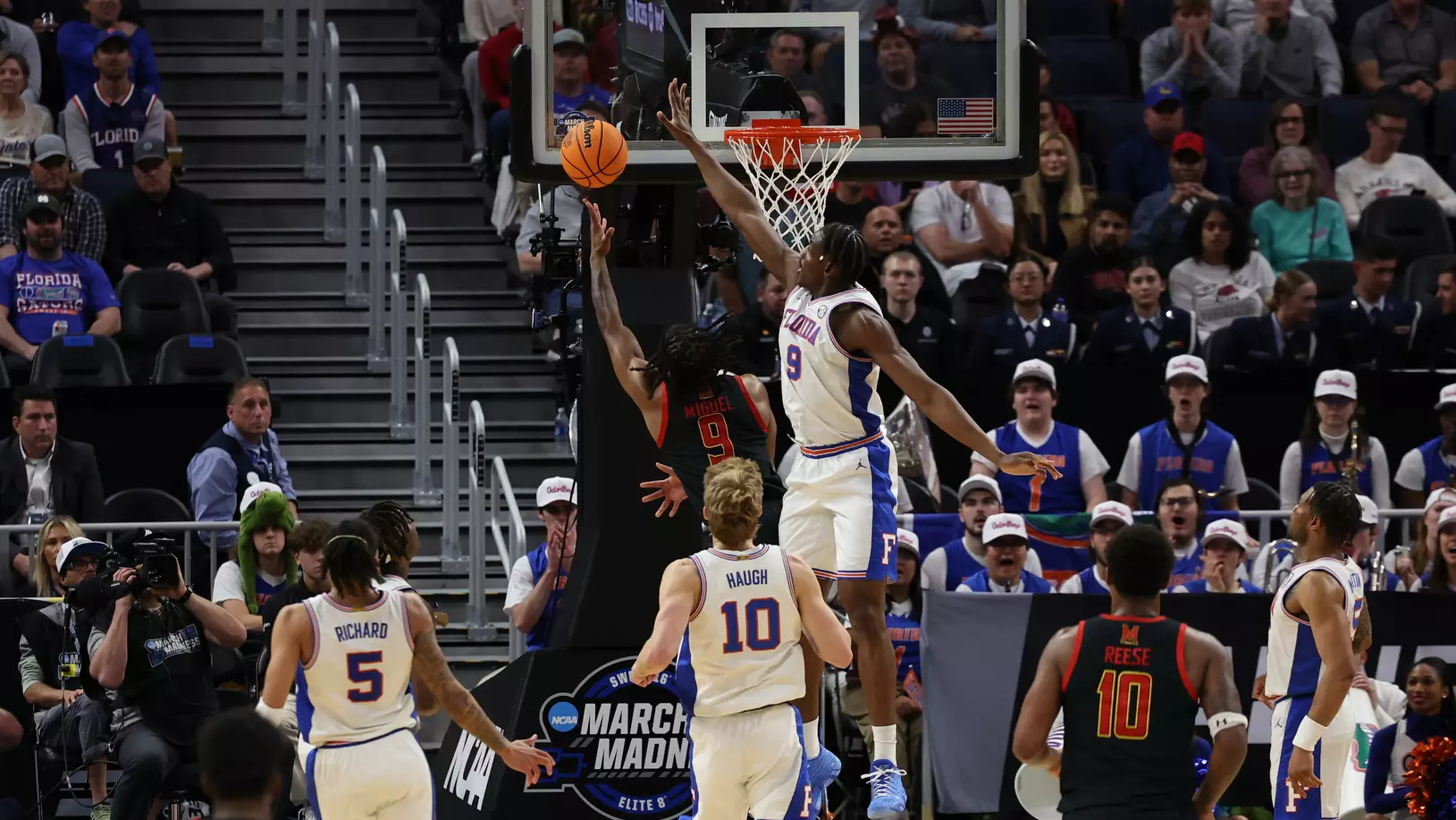
He transferred from Washington State after a freshman season when he gained a reputation as a raw big man who struggled to stay out of foul trouble, logging just 13.9 minutes per game with the Cougars. In his first year as the Gators’ center, the 6-10, 260-pound Chinyelu started all 40 games, averaged 19 minutes and the Gators would not have won the national championship without him. Some of the greatest impact Chinyelu (6.0 ppg, 6.6 rpg) had on games could not be quantified by a box score. He was an absolute monster in the paint (career-high 15 rebounds against alley-fighting Tennessee), with opposing bigs unable either to move him or get around his chiseled screens, many of which doubled as duck-ins that walled off defenders and cleared the way for Clayton, Martin, etc., to attack the rim and finish unchallenged. Chinyelu had a very short dabble with the NBA and portal processes, but firmed his commitment to the team early and spent the summer in the gym working out. The second-year starter may turn out to be one of the most improved players on the squad, but also – given his unmatched physicality and strength – one of the five best centers in the country. And with his time in the gym and improvement on offense, don’t be surprised if some of his numbers aren’t so hidden in the box score this season. A good early sign will be at the free-throw line, where Chinyelu needs to up that 58.2% number.
PEDIGREE PRO PROSPECT: Boogie Fland
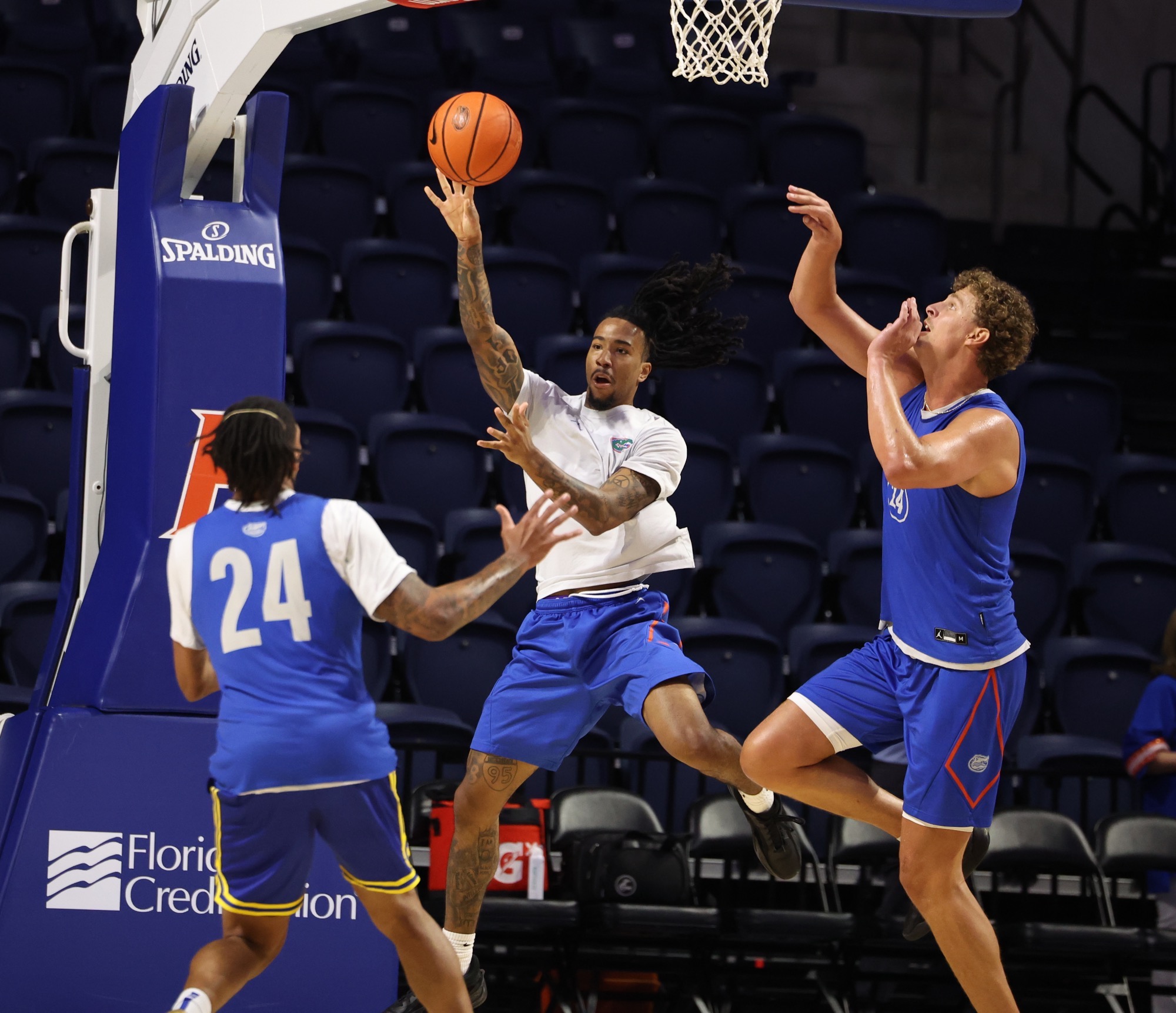
The last time UF added a former McDonald’s All American to the roster was in 2019 when the Gators signed Scottie Lewis and Tre Mann out of high school. So, it’s been a minute. Fland took those credentials to Arkansas for his ’24-25 freshman year when – despite arriving with a hernia injury, then missing 15 games in the second half of the season after tearing wrist ligaments – he averaged 13.5 points, 3.2 rebounds and 5.1 assists. When preseason practice officially begins next week, Fland will be as healthy as he’s been as a collegian and is expected to step into the so-called “PG1” spot vacated by Clayton, albeit in a jiggered role he’ll share with a fellow newcomer (read on). Fland, out of the Bronx, New York, is likely the fastest player to join the Gators since Chris Chiozza, which should make for some electric transition offense. By definition, he’s probably a combo guard, but those assist numbers and outstanding assist-to-turnover ratio (3.7, which was second in the SEC last year) scream “unselfish playmaker.” Fland goes 6-3 and just 180 pounds, but he’s more athletic and physical than his frame might suggest. He shot just 37.9% from the floor and 34.0 from distance, both numbers the team expects to increase, with a focus on his finishing around the rim. How the Florida staff lands on an offensive system with two ball-dominant transfer guards who also excel at distributing the basketball will be one of the top story lines of fall practice and on into the regular season.
SUPER-SKILLED TRANSFER: Xaivian Lee
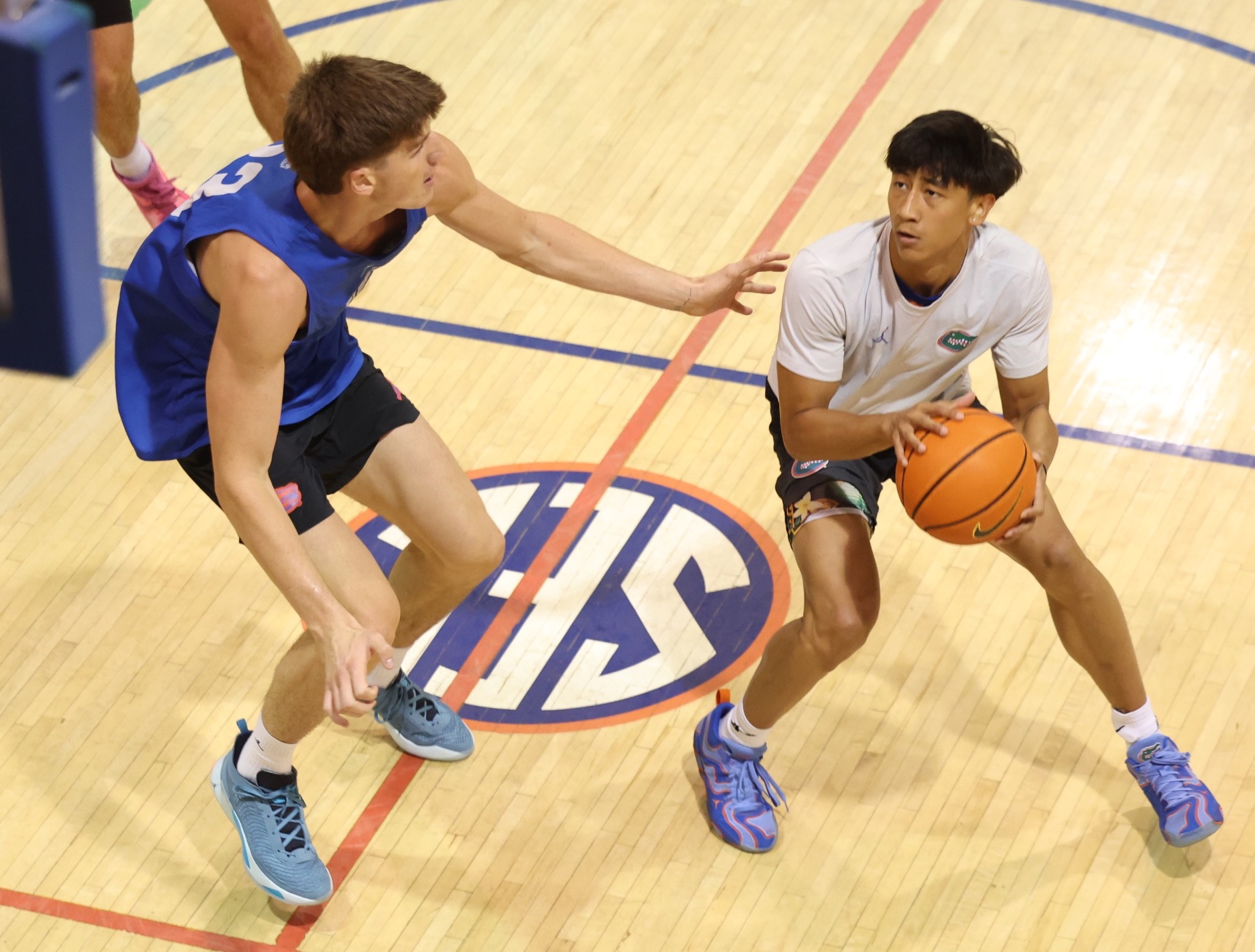
Lee, the 6-4, 180-pound two-time first-team All-Ivy League honoree at Princeton, rounds out the projected starting five. We’ll go ahead and tag him at the “2” shooting guard spot, but his role and that of Fland is expected to be interchangeable, with both players able to bring the ball up and start the offense. Lee averaged 16.9 points, 6.1 rebounds and 5.5 assists last season and ranked 75th nationally in usage (he led the Ivy in field-goal attempts with 408) and 19th in assist rate (36.8%). His ability to create off the dribble, especially creating space against his defender, makes him the team’s top late-shot threat. Lee hit a career-high 36.6% from the 3-point line in ’24-25, but only attempted 161 (Context: Clayton took 303, Martin 226, Richard 223). That’s because the Tigers didn’t have a lot of offensive firepower around Lee, which not only made him the focus of every defense but cut down on his catch-and-shoot opportunities. With Florida’s side-to-side and inside-out ball movement, Lee is going to get more open 3-point looks than he’s ever seen, so it’ll be incumbent on him to capitalize. One thing he’ll definitely do is create for teammates (his 165 assists would have led the Gators last season in 10 fewer games), but he’ll have to do everything against much bigger, better and more physical players than he’s used to facing. Lee is a career 79.6% free-throw shooter. Fland shot 83.3 at Arkansas. So, both should be reliable closers at the line in late-game situations.
FULL-GO FRONT COURT LUXURY: Micah Handlogten
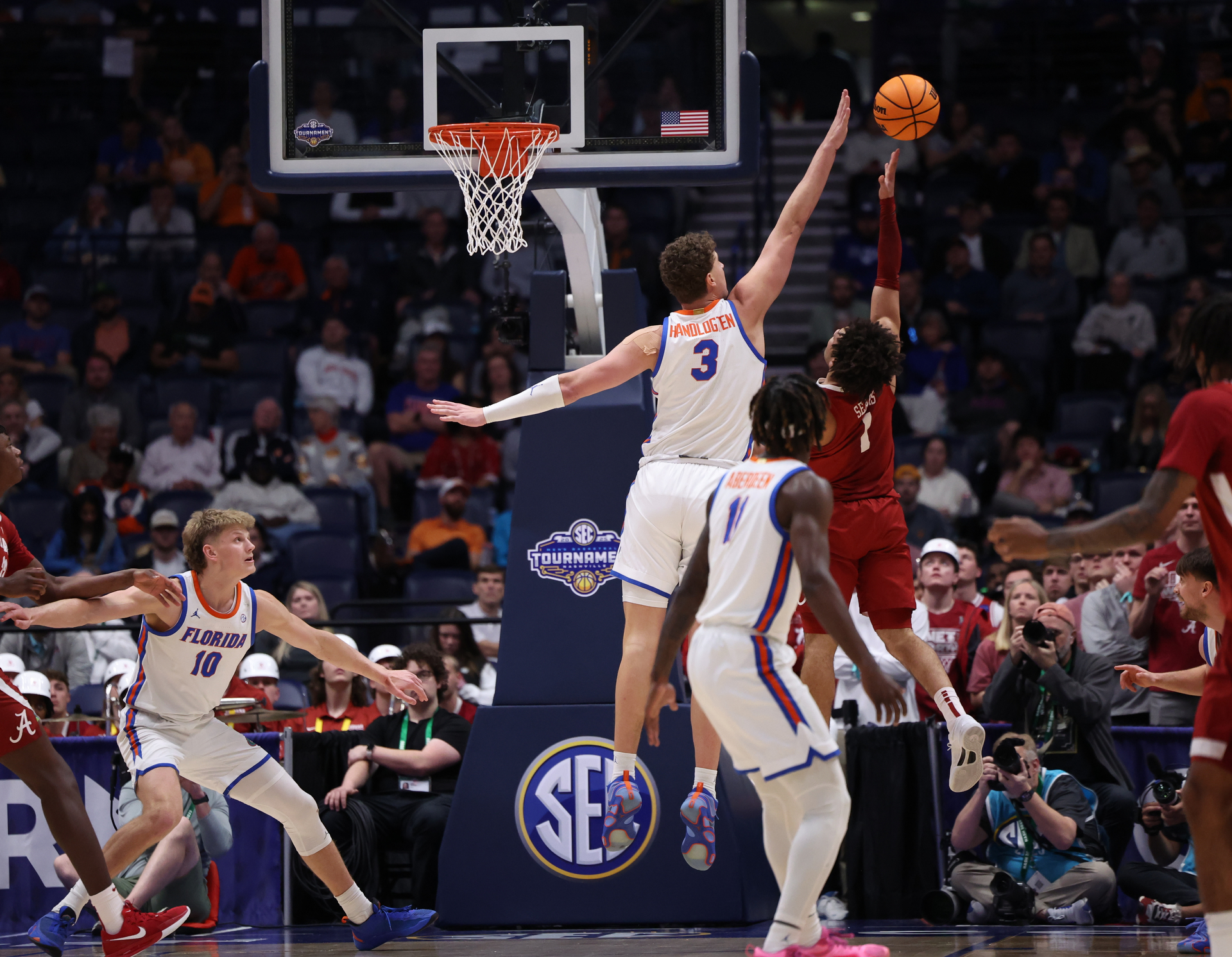
Think about the range of preseason narratives for UF’s 7-1 senior in his three seasons since transferring from Marshall. In ’23-24, he came in as the starting center for a program looking to rebuild (and rebound) in Golden’s second season. In ’24-25, he was ticketed for a medical redshirt season to recover from a horrific compound fracture of his leg in the SEC Tournament six months earlier. Now in ’25-26, he’s bigger, stronger, in better shape and positioned to be one of the best big men the country … (wait for it) … as a backup. He’s completeley cool with it, too. Handlogten’s surprising – and refreshingly unselfish – decision to opt out of that redshirt season in February gave the Gators crucial, impactful front court minutes in the run to the national title. A locker room favorite, Handlogten averaged just 2.6 points over 13.3 minutes of his 16 games last season, but nearly five rebounds, including a 21.5 defensive rebounding percentage (second-best on the team) and a team-high 13.7 on the offensive end. Now back at full strength and up to a sturdy 260 pounds, Handlogten, with his feel for the game, will be a fixture in the three-man “5” rotation (alongside Chinyelu and Condon) and solidify the best and deepest front court in the nation. He’s an excellent passer from the low post who keeps the offense moving and is particularly adept at kick-outs to open shooters on offensive boards. If he wants to play late in games though, Handlogten has to fix his free-throw shooting, which sits at 33.3% in his two Florida seasons after going 2-for-11 (18.2%) in ’25.
BEST SHOOTER: Urban Klavzar

Oddly, UF fans and media had Klavzar pegged as a point guard when he made his late arrival last summer following a brief pro career with Real Madrid. That was never his role and won’t be here. That’s not to say he can’t make basketball plays, but what Klavzar put on display during his occasional appearances last season was what he was – and what he figures to be in ’25-26, but with more minutes. Klavzar, of course, is an elite spot-up shooter. He got off to a slow start as a collegiate rookie, but don’t underestimate how his in-limbo eligibility situation – not being cleared until the season’s fourth game – weighed on him mentally throughout the preseason and affected his play. Klavzar missed 12 of his first 13 shot from distance, but probably was pressing to make good on his limited playing time. Eventually, Klavzar found his stroke and made the most of the time when both Martin and Clayton missed games with injuries, with a seven-game SEC stretch when he went 11-for-19 from distance. His sophomore minutes decreased into the postseason, as the Gators faced more physical defenses that extended and denied him space on the outside. He finished at 3.2 points, averaging 10 minutes over 26 games, and shot 34% from the arc. Though he did not play after the Sweet 16 round of the NCAA Tournament, Klavzar was a spirited teammate on the bench. The summer showed he still has the sweetest stroke on the team – with Fland and Lee learning to find him in transition – but the ’25-26 Klavzar will be the first guard off the bench and look to become a more complete player, starting with being stronger on and off the ball in his second season in the SEC.
HIS FOR THE TAKING: Isaiah Brown
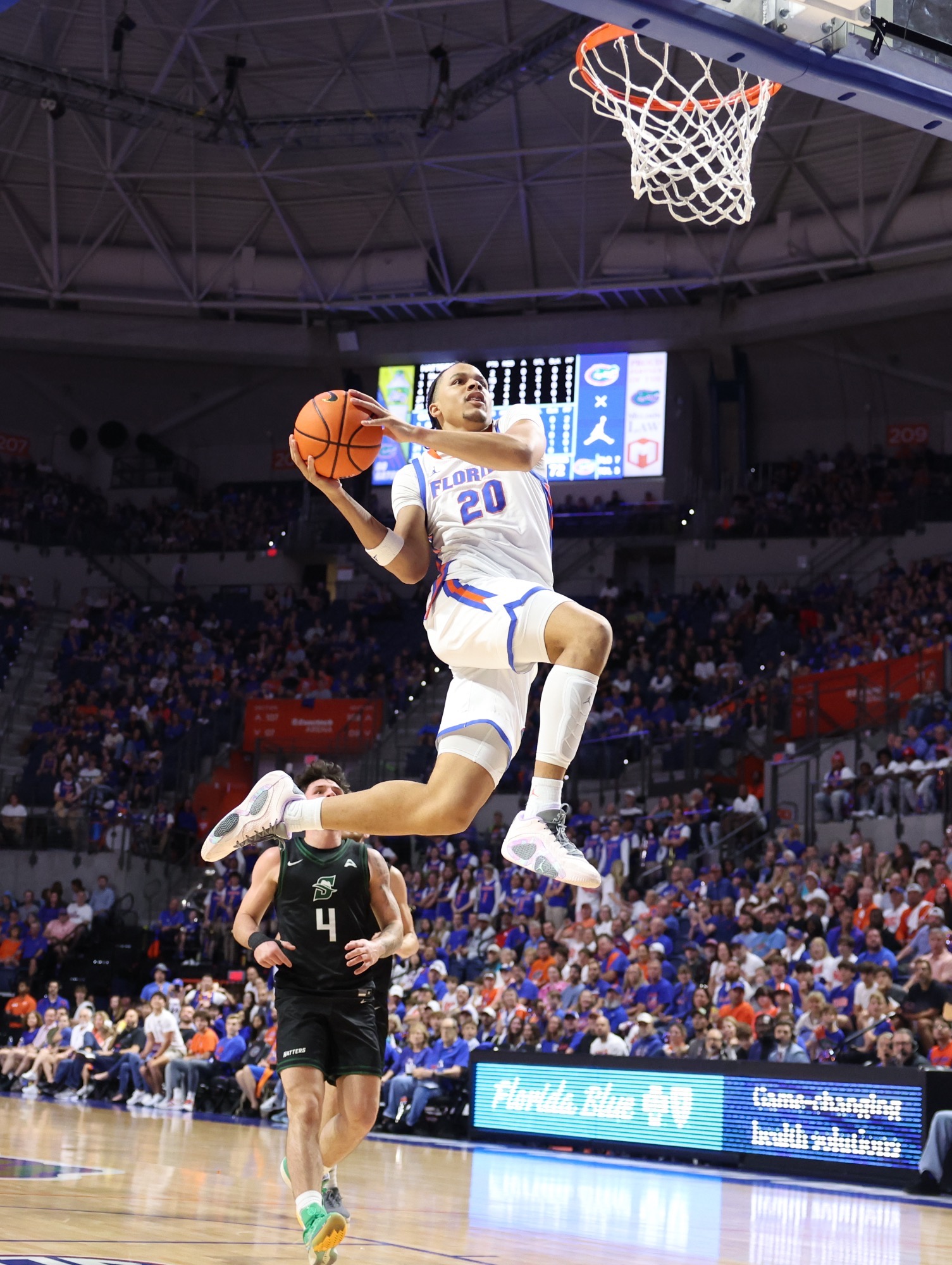
Someone has to step up and take the backup “3” spot; someone who can run the floor, put the ball on the deck, hit 3s, defend on the perimeter and make winning plays in limited usage. The Florida coaches will give Brown, the sophomore who played sparingly as a freshman and scored only 36 points in just 3.8 minutes over 19 games, the first crack at being Haugh’s understudy. It’s up to the Orlando product to seize the opportunity. Brown’s rookie numbers were sound, albeit in a limited sample size. He shot 52% from the floor, hit three of eight from 3-point range and played his most meaningful minutes when Clayton sat out against Vanderbilt. The 6-4, 195-pounder had some eye-catching moments on the scout team during practices and was a dutiful, energetic teammate on the sidelines. The Gators will find out early just how much they can rely on him, but the staff would like to have a pipeline of program guys – like they thought they had in Denzel Aberdeen, who they hoped would be a rare four-year, same-school player – who develop, stay around, find their niche and eventually step into take-charge roles. For Brown, day-to-day consistency (at practice and carryover into games) will be key.
RECOVERING WILD CARD: AJ Brown
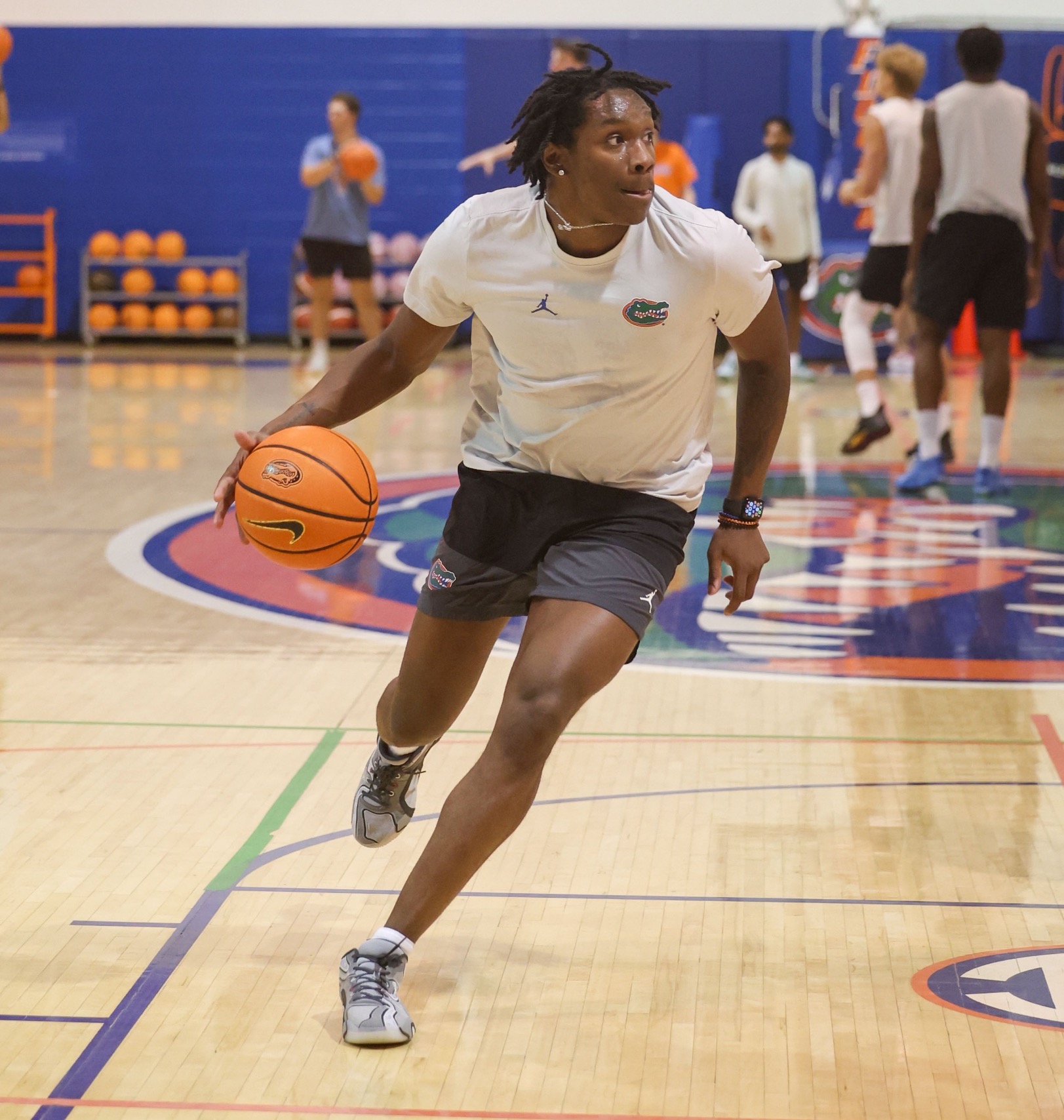
Brown, Isaiah’s older brother, was a career double-figure scorer at Ohio, where as a junior in ’24-25 he averaged 13.2 points and shot nearly 39% from the 3-point line before his season ended March 1 with a shoulder injury. Brown underwent surgery, entered the transfer portal and landed at UF, where he spent the offseason rehabbing and slowly working his way back on the court. The 6-4, 210-pound Brown had been running and shooting for weeks, but was not officially cleared for contact until last week, so he’ll start the preseason playing from behind in the race (alongside his brother, as it turns out) for minutes as the backup wing. The older Brown has six career games with at least 20 points (with a career-high of 28) and a dozen games with at least three 3-pointers. He’s also missed 35 games due to injury (8 as a freshman, 24 as a sophomore, 3 as a junior), so how strong, sturdy and healthy he gets in the coming weeks will play a part in his role. When full-go, though, Brown might be a microwave kind of player along the lines of Klavzar last season, but he definitely was more than just a spot-up shooter over his three seasons in the Mid-American Athletic Conference, evidence by his 50% career from the 2-point area and nearly 77% from the free-throw line on 176 attempts. His resume is good, but he’s only put in one week of real work since arriving in the spring. The coaches will want to see more.
FRESH(MAN) FACES: CJ Ingram & Alex Lloyd
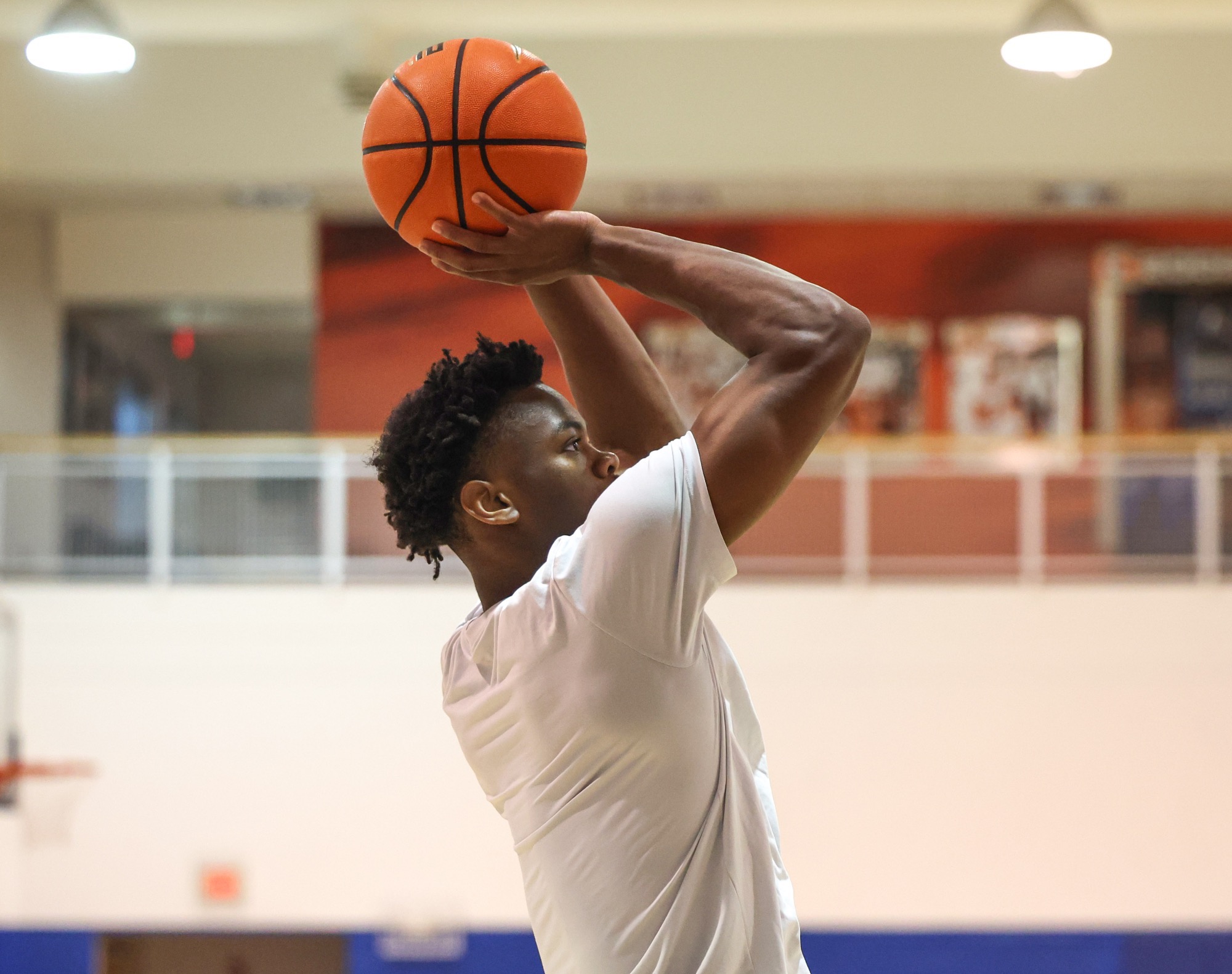
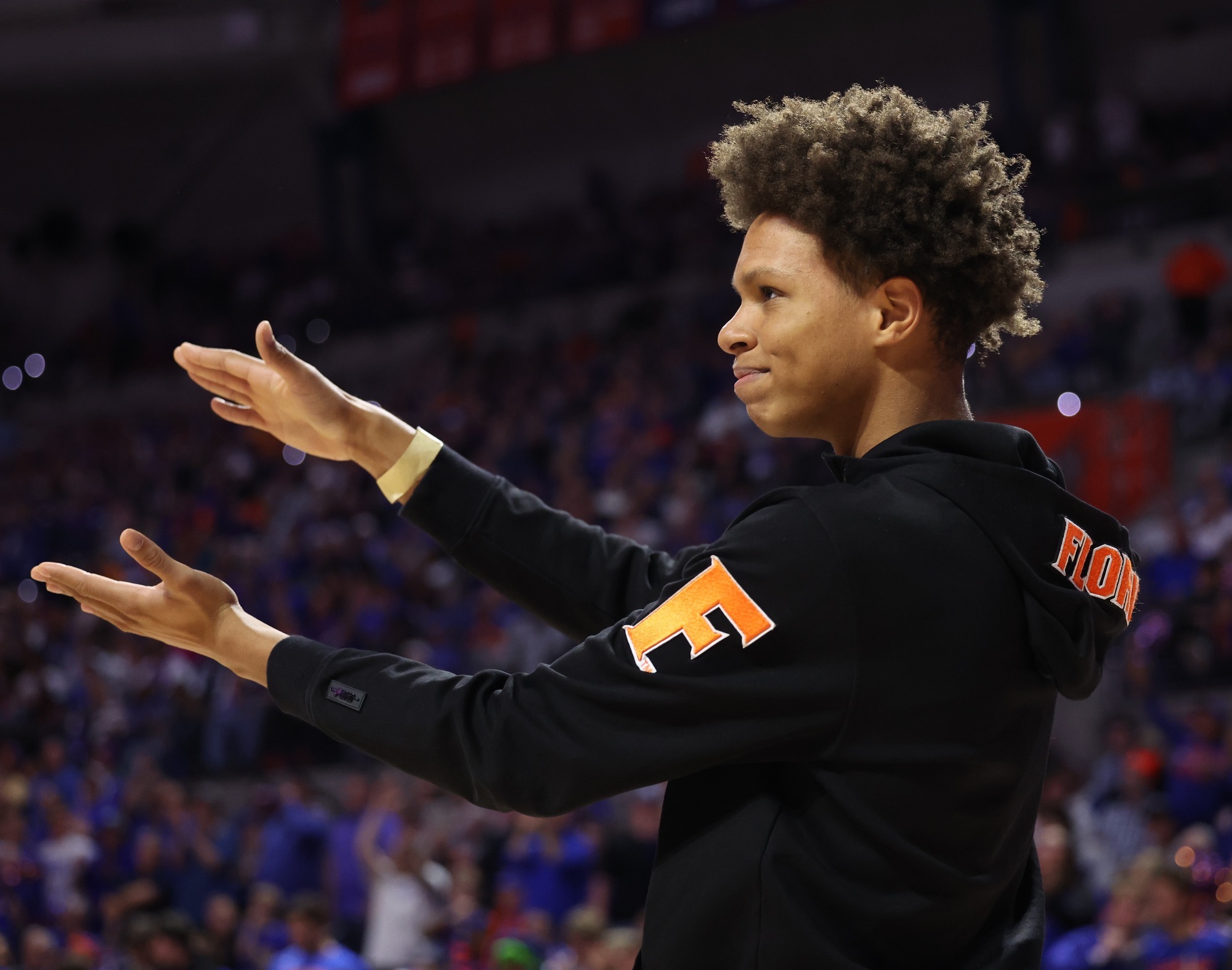
Recruiting service rankings vary. For what it’s worth, ESPN pegged Florida’s two-man freshman class as the 22nd-best in the nation and eighth in the SEC. Rivals was less generous: 47th overall and 13th in the league. It’s worth noting that UF’s 2023 class, minus any Top 100 prospects, was at the bottom of the SEC ratings. FWIW: Condo and Haugh might disagree. Whatever. The Gators like Ingram, the Hawthorne, Florida wing and son of former UF tight end (and part-time Billy Donovan forward) Cornelius Ingram, and Lloyd, a combo guard who got to campus with a nice (even better-than-anticipated) all-around offensive game and went right to work to improve it. Ingram erupted on the club circuit last summer, mostly for his eye-popping athleticism, vaulting from a top 125 guy into the top 30. His shot is a ways away, but Ingram has been a fixture in the gym working on his craft since showing up in May. For now, he’s long, athletic, bouncy and – once he figures out where to be and what to do on the floor – projects as a defensive stopper who could possibly guard four positions. He’s not there yet. Lloyd, out of Miami Westminster, is much further along offensively, is armed with a very nice feel for the game and may have a clearer path to seeing the floor (if only for small minutes) than his classmate this season. He averaged 27.9 points as a senior, with three games of 40-plus. Lloyd has had some really nice pickup moments, especially with his jumper.
FIFTH FRONTCOURT BODY: Viktor Mikic

UF signed the 6-11, 250-pound Mikic, by way of Serbia, during the summer of ’24 to give the team some size, bulk and depth to bang with Chinyelu and Condon during practice. That was pretty much how things played out, with Mikic playing just seven minutes over four games – his last appearance in the Thanksgiving tournament at Orlando – with only one field-goal attempt. He did not dress out during the NCAA Tournament. Mikic, though, went home for the summer and represented his country admirably in the FIBA U20 EuroBasket competition, averaging 10 points, 5.4 rebounds and providing some encouragement for the staff. On paper, there doesn’t seem to be a lot of minutes available in the front court, though Haugh’s minutes at the “3” spot could provide a narrow opening, if Mikic has made enough strides to walk through it.
DOWN UNDER PRACTICE DEPTH: Alex Kovatchev
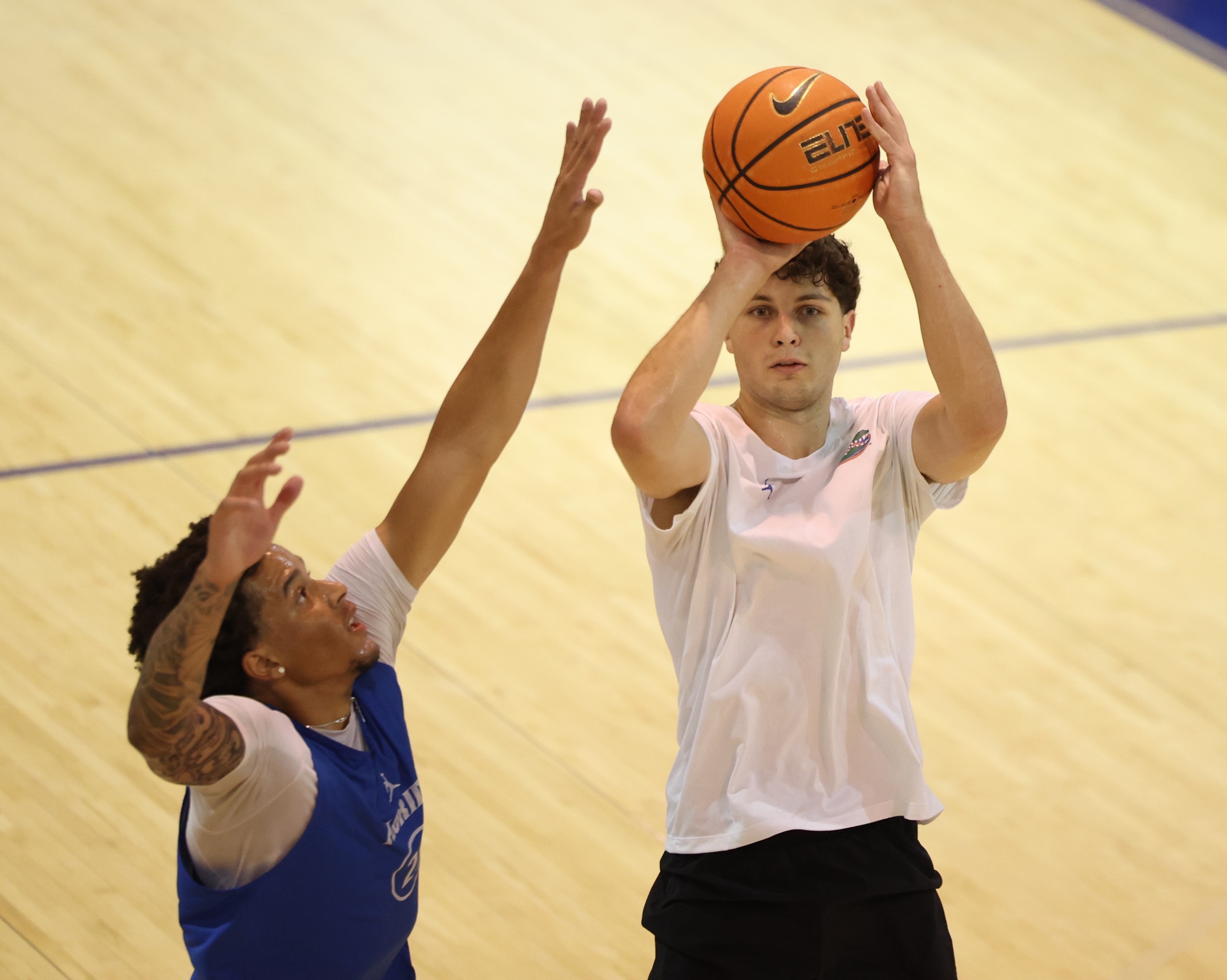
The Gators entered the summer with just 12 scholarship players, one under the NCAA maximum, and plucked Kovatchev, a 6-5, 190-pound formerly at Sacramento State, late from the portal. UF, with AJ Brown still not cleared to play at the time, wanted another body in the backcourt. The Gators not only got one, but added a second Australian to the roster; from Perth, no less, same as Condon. The two were actually teammates at the Basketball Australia Centre of Excellence, so there was instant familiarity there. Kovatchev, a third-year sophomore, started 12 of 33 games as a true freshman in the Big Sky Conference, but played just four games in ’24-25 before suffering a season-ending broken leg while averaging 8.5 points and 5.0 rebounds for the Hornets. The coaches like his feel, awareness and how easily he picked up the system, so he can’t be ruled out on the wing. But the SEC is a long way from the Big Sky.
THE WALK-ONS: Olivier Rioux & Cooper Josefsberg
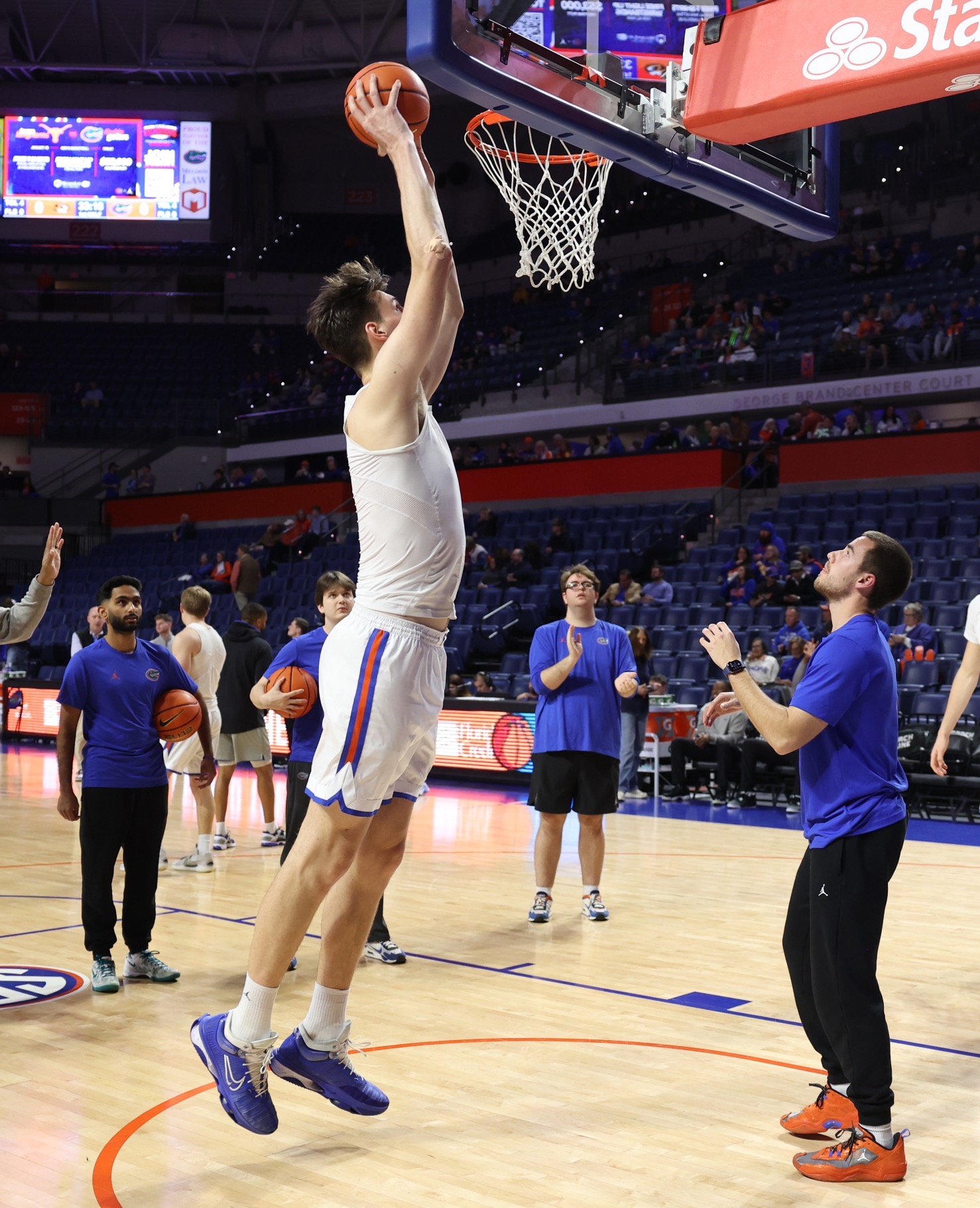
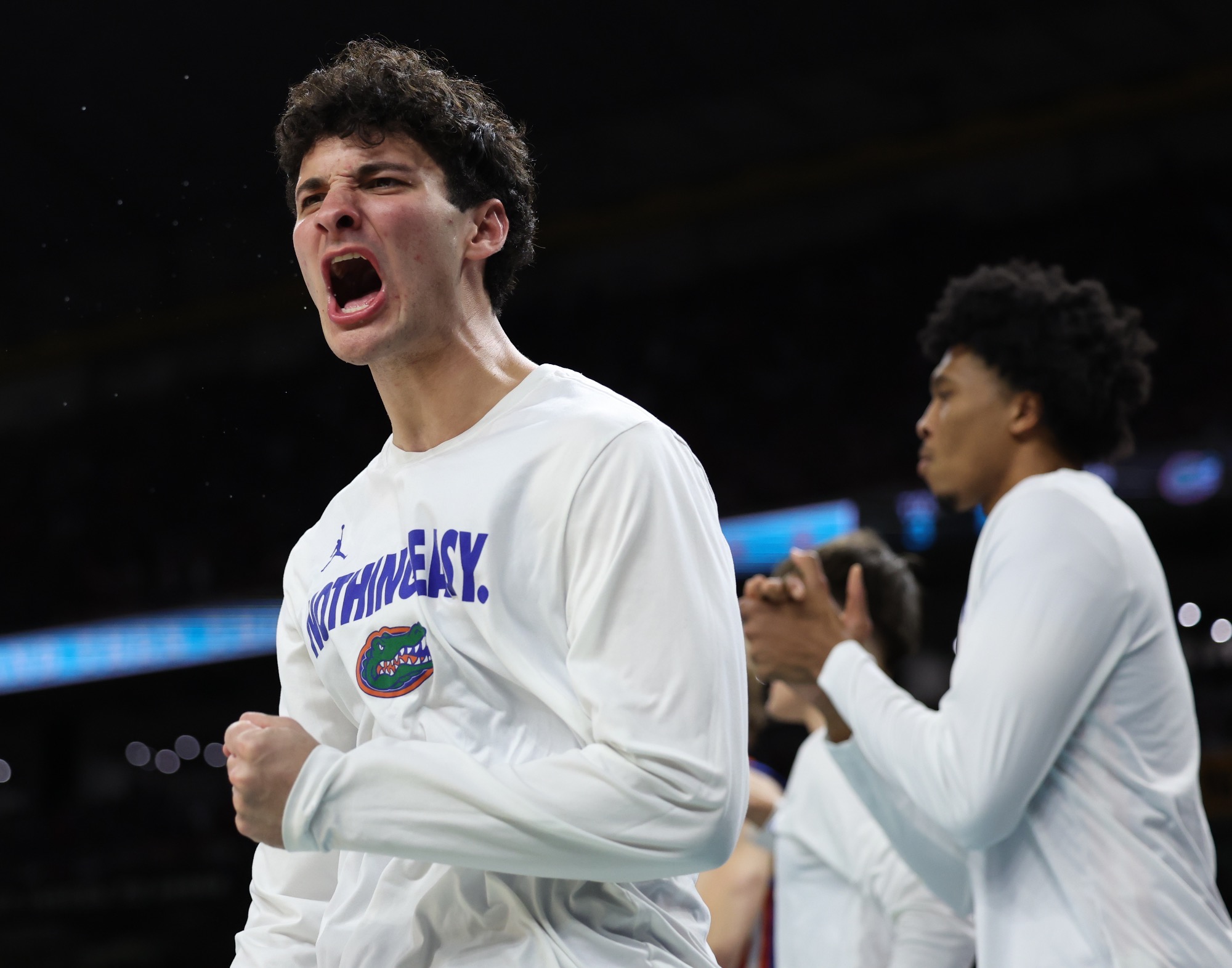
Suffice to say Rioux became the most famous player in the country last season who never saw the floor. The tallest player in college basketball, the 7-9, 290-pound center took part in very few practices while focusing on development and conditioning. Over the summer, Rioux started for Canada’s FIBA U19 Basketball World Cup team and averaged 1.6 points and 2.0 rebounds in about 10 minutes per game. Rioux’s on-court, live-action time upon his return has remained limited, so he’s looking at another season of development. Unlike last year, when a redshirt season was the plan all along, Rioux is now a second-year freshman, meaning he’s about to be a favorite of the Rowdy Reptiles, who will serenade Golden with “WE WANT OLLIE!” cheers during home blowouts. Josefsberg, a junior guard and one of the most popular players on the team, appeared in four games last year and did not attempt a shot. Bet he does this year. Bet he makes one, too.
Email senior writer Chris Harry at chrish@gators.ufl.edu
Source link
editor's pick
latest video
Sports News To You
Subscribe to receive daily sports scores, hot takes, and breaking news!




